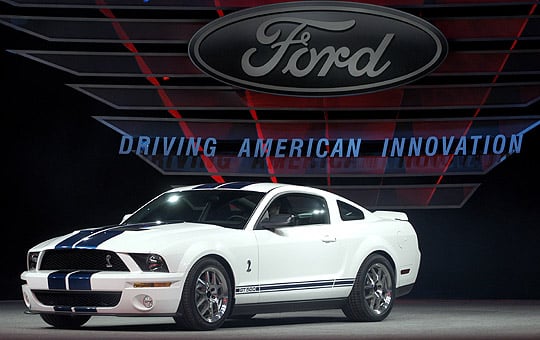
In a glorious backlash against concerns over the environment, the oil price and their own economic condition, the 'Big Three' US car makers have revealed cars that hark back 35 years when performance was all. Ford have officially launched their 475 bhp supercharged GT500, that will be available both as a coupe and as a convertible when it goes on sale in the summer of 2006, while GM (Camaro Concept) and DaimlerChrysler (Dodge Challenger) have cars they hope can compete in the 'modern retro' market made popular by Ford with their three-year-old Mustang GT Coupe.
Ford Shelby GT500
"It's one thing to put 450 horsepower in an exotic supercar," says Carroll Shelby. "It's another to put that much power in something as affordable as a Mustang. The fact that they not only met their goal but pushed on to 475 horsepower is a remarkable achievement."
The Ford Shelby GT500's supercharged 5.4-litre, 32-valve V-8 evolves from Ford's experience with tuning its modular, or MOD, engines. The engine is force-fed an air-and-fuel mixture via a "Roots-type" supercharger, and the GT500 uses a cast-iron engine block with (borrowed from the Ford GT) aluminum, four-valve cylinder heads, piston rings and bearings.
A 6-speed manual gearbox is used to give the car a 'performance' feel to appeal to the enthusiastic driver, while an uprated MacPherson strut independent front suspension with Reverse L lower control arms, and a solid-axle, three-link rear suspension with coil springs is a higher specification version of the standard car's set-up.
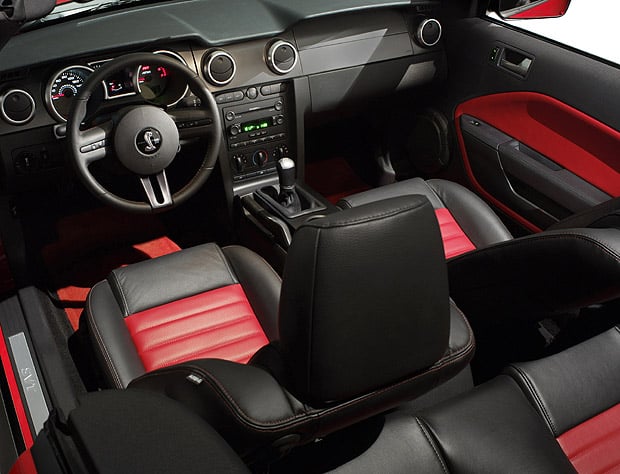
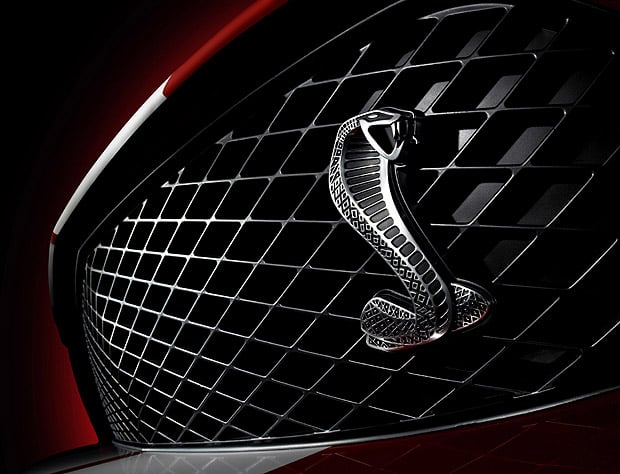
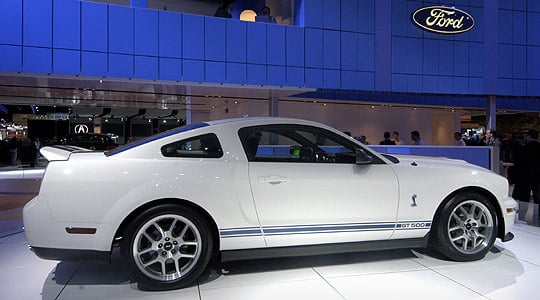
Braking is via four-piston Brembo calipers fitted to 14-inch Brembo vented rotors at the front, and 11.8-inch vented discs in the rear. Tyre sizes are 255/45ZR front and 285/40ZR rear, mounted on 18" x 9.5" alloys.
Outside, the GT500 has aggressive modifications to the front grille, bonnet (hood) and badging where the famous off-centre Cobra makes a re-appearance together with stripes on the coupe but not the convertible as the 1960s originals were 'plain'. The interior carries on the smart look of the regular car with additional bolstering on the seats, revised dash and a cloth hood on the cabrio that Ford expects to put the car amongst its expensive company stablemates at Jaguar and Volvo.

Dodge 2006 Challenger Concept
Using Chrysler Group’s rear-wheel drive LX platform and its legendary HEMI® engine, and the performance-oriented Dodge name, the Chrysler Group’s West Coast Pacifica Studio designers have come up with a modern version of the highly-collectible Challenger.
"Challenger draws upon the initial 1970 model as the icon of the series," said Tom Tremont, Vice President - Advanced Vehicle Design. "The 1970 model is the most sought after by collectors. But instead of merely recreating that car, the designers endeavored to build a Challenger most people see in their mind’s eye - a vehicle without the imperfections like the old car’s tucked-under wheels, long front overhang and imperfect fits. As with all pleasurable memories, you remember the good and screen out the bad".
The Challenger concept sits on a 116-inch wheelbase, six inches longer than the original. But its width is two inches greater, giving the concept car a squat, tougher, more purposeful persona. Both the hood and the deck lid of the Challenger concept vehicle are higher than the 1970 in order to lift and "present" the front and rear themes. The front end features the signature Dodge crossbar grille and four headlamps deeply recessed into the iconic car-wide horizontal cavity.
At the rear, the car-wide cavity motif is repeated, encompassing a full-width neon-lit taillamp. Both the grille and the front and rear lamps are set into carbon-fiber surrounds. Like the original, slim rectangular side marker lamps define the ends of the car.
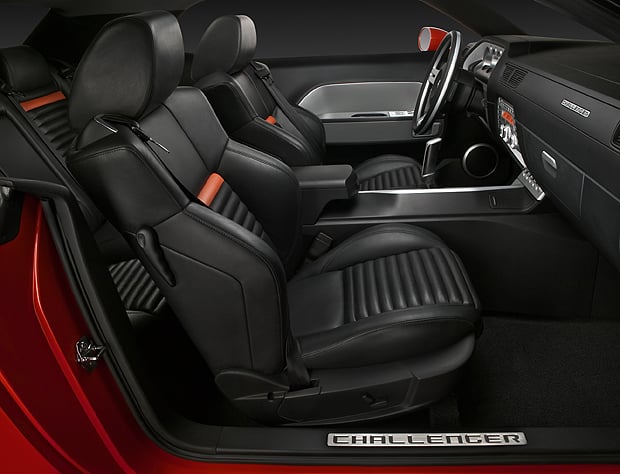
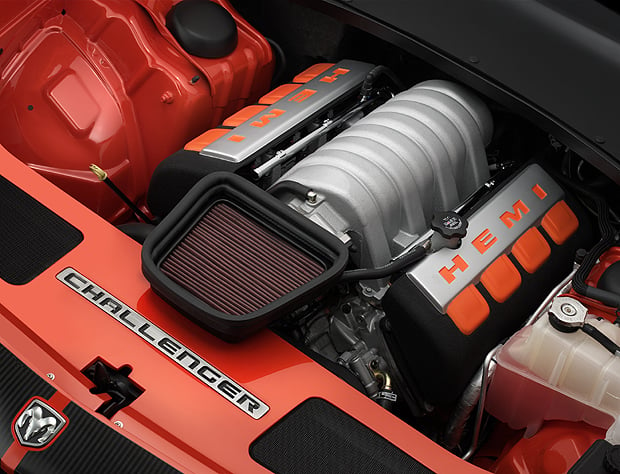
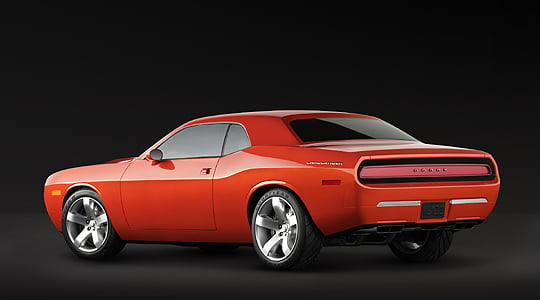
Bumpers are clean (no guards), body-colour and flush with the body. "This is something we would have loved to do on the original Challenger," said Jeff Godshall, who was a young designer in the Dodge Exterior studio when the first Challenger was created, "but the technology just wasn’t there. With the Challenger concept, however, the Pacifica Studio designers are able to realize what we wanted in our perfect world."
Designed to showcase the modern techniques used in fabricating the car, what look like painted racing stripes are actually the exposed carbon fiber of the hood material contrasting with the Orange Pearl paint. The Challenger concept is a genuine four-passenger car and the interior is modern with nods towards the past with its all-black leather treatment, satin-silver highlights and thin orange bands. The car runs on five-spoke chrome wheels - 20-inch, front; 21-inch, rear.
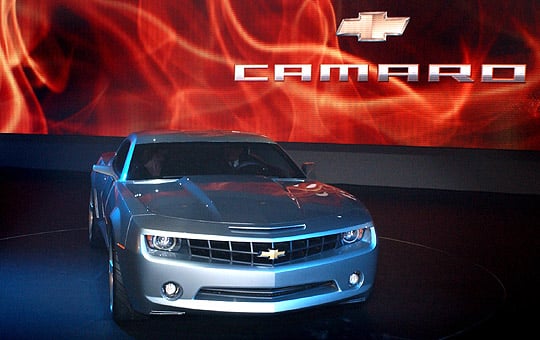
Chevrolet Camaro Concept
"Millions of people of all ages fell in love with the Camaro for all of the right reasons," said Ed Welburn, GM vice president, global design. "Camaros were beautiful to look at and offered performance that could rival expensive European GTs. Yet they were practical enough to drive every day and priced within the reach of many new car buyers."
Though only a show car at this point, the Camaro Concept is intended to explore customer reaction to design and engineering elements that might lead to an all-new version of the Camaro. The 1969 Camaro, considered by many to be the best first-generation design, was a significant inspiration. But as GM design teams in Warren, Mich., worked on alternatives for the Camaro Concept, they also turned to the latest Corvette and to aircraft like the YF-22 'Raptor', seeking a design that encompasses the spirit that made the 1969 Camaro great, but interprets that spirit in a fresh, exciting way.
The Camaro Concept features the latest generation of GM’s small-block V-8. The 6.0-liter LS2 engine features an aluminum block and heads for light weight, and Active Fuel Management™, which shuts off four cylinders to save fuel when the engine is lightly loaded. This concept version of the LS2 is rated at 400 horsepower, yet it could also deliver more than 30 mpg at highway speeds. Like the Ford GT500 and Dodge Challenger a six-speed transmission is preferred to a more custmary auto 'box.
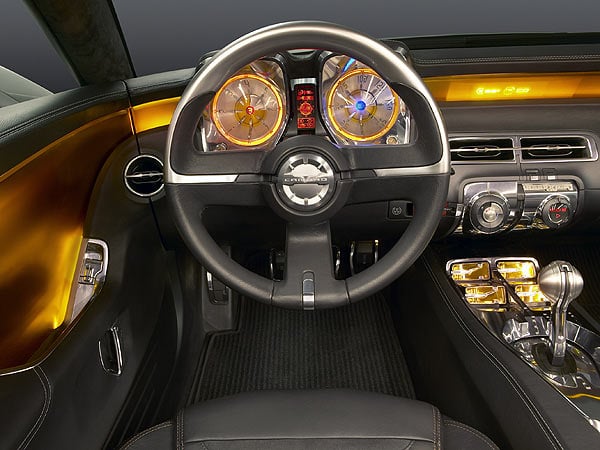
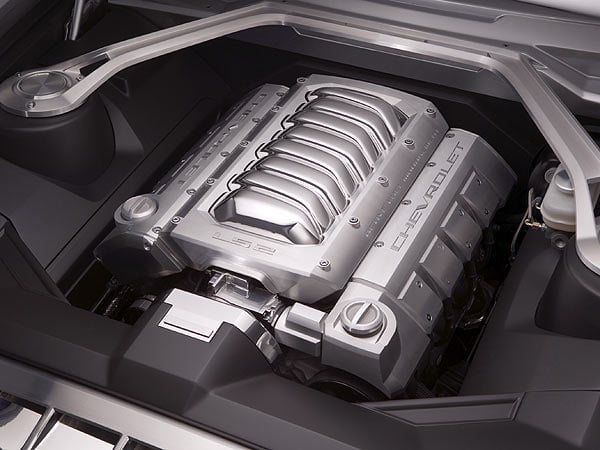
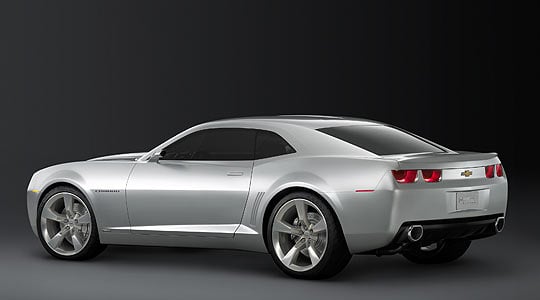 The car also features a rear-wheel drive chassis with independent front and rear suspension that features progressive-rate springs and gas dampers. Four-wheel vented disc brakes with 14-inch rotors should provide confident stopping under all conditions.
The car also features a rear-wheel drive chassis with independent front and rear suspension that features progressive-rate springs and gas dampers. Four-wheel vented disc brakes with 14-inch rotors should provide confident stopping under all conditions.
Wheels for the Camaro Concept are unique five-spoke cast alloys, 21 inches front and 22 inches rear. The tyres are 275/30R21 front, 305/30R22 rear.
Text: Classic Driver
Photos: Ford/DaimlerChrysler/GM
ClassicInside - The Classic Driver Newsletter
Free Subscription!












